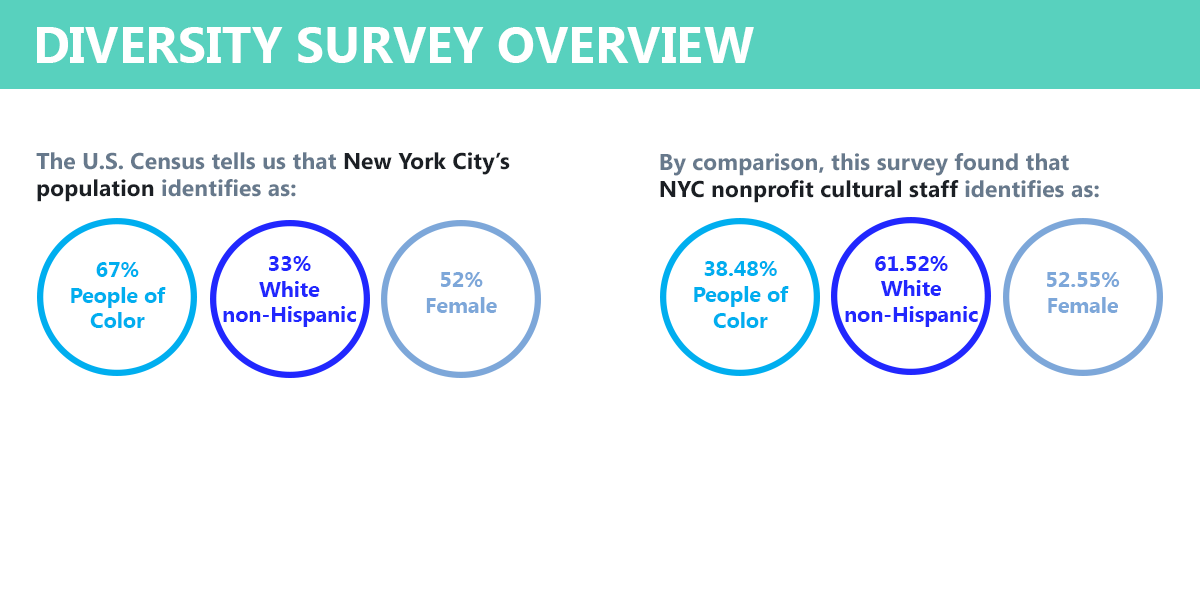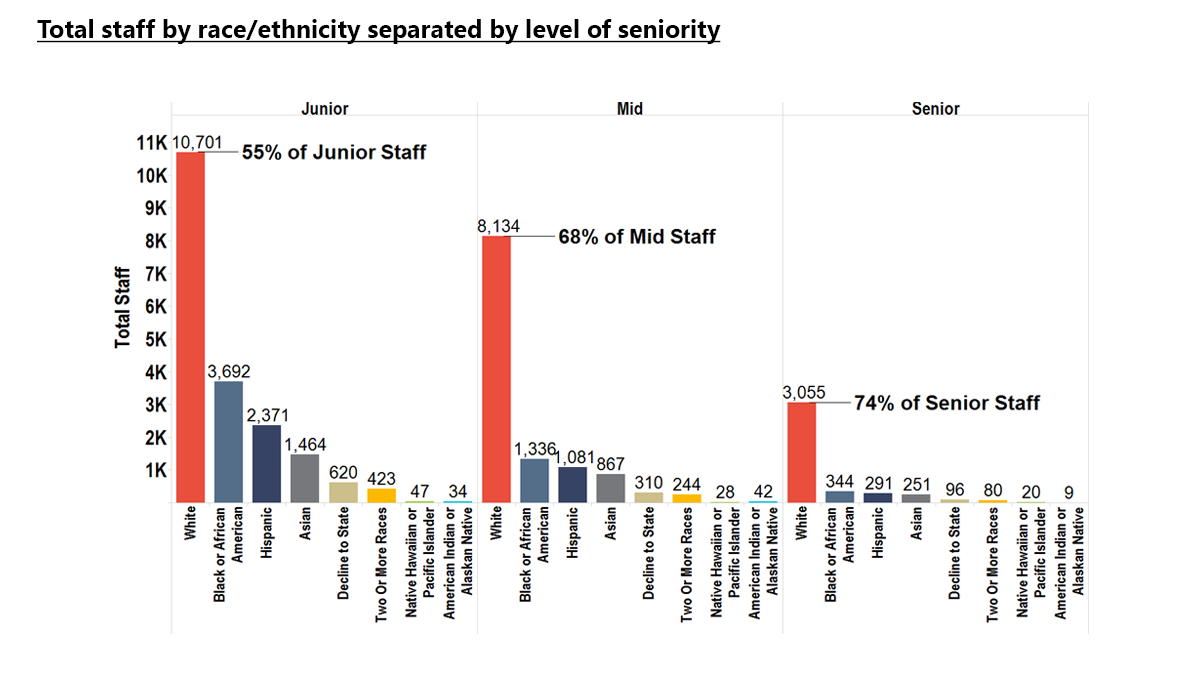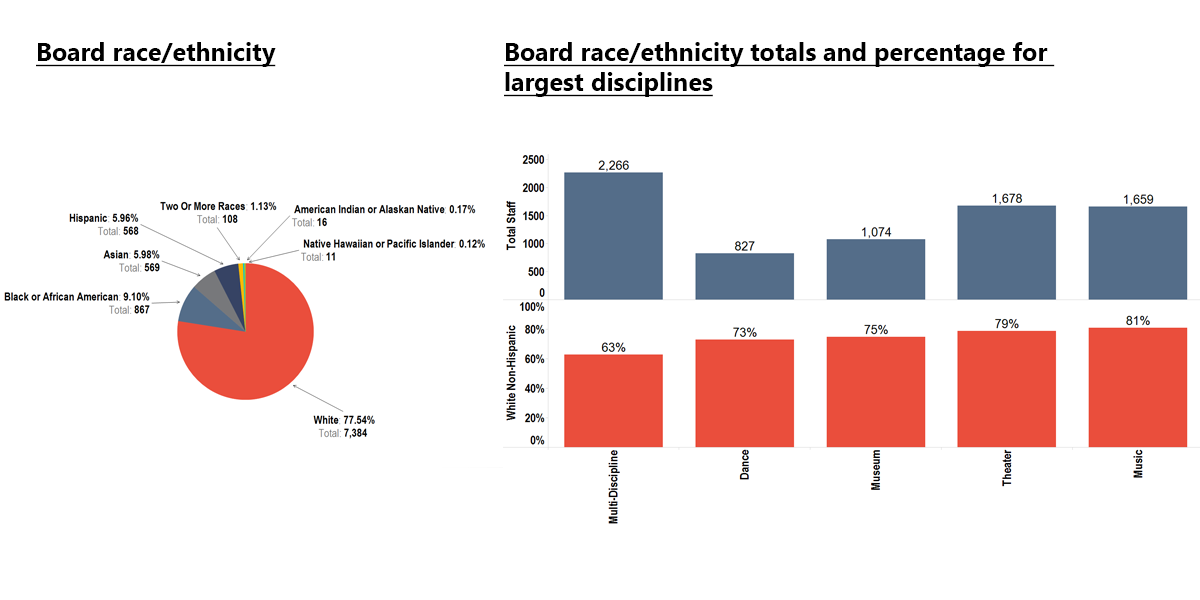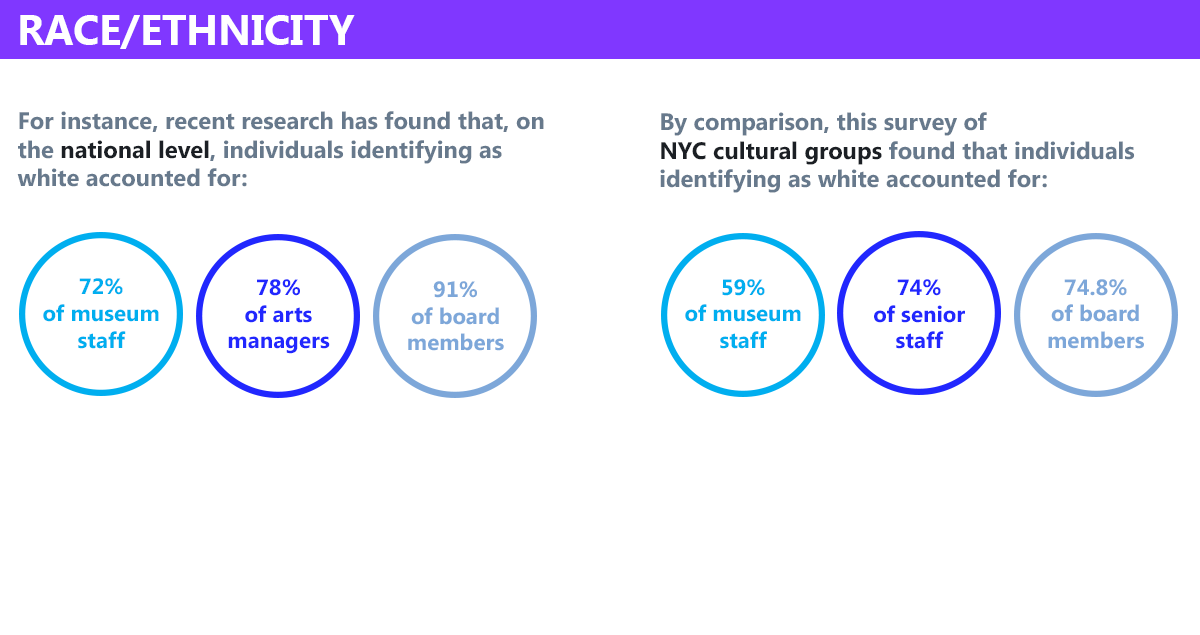
 Cultural Affairs311
Cultural Affairs311 Search all NYC.gov websites
Search all NYC.gov websites

As part of our ongoing initiative to work towards a diverse and equitable cultural workforce, we worked with the research firm Ithaka S+R with support from the Mertz Gilmore Foundation and Rockefeller Brothers Fund to conduct a survey of our recent grantees. In order to work towards implementing strategies and programs to promote equity in the cultural workforce, we need to understand where we stand as a sector.
Ithaka S+R collected demographic data on race/ethnicity, gender, disability, age, job type, and level of seniority from 987 organizations. The complete survey findings are available on Ithaka S+R’s website. Download our full overview from the survey here. Below are the highlights from the survey findings.

Over half of individuals in leadership roles are women. This holds true on the staff level, which includes an even mix of men and women. Likewise, cultural boards are split almost evenly between men and women. However, non-binary individuals are notably underrepresented.


Junior level roles show greater diversity than senior level positions. This presents opportunities for creating professional development programs to train our next generation of leaders that better reflects the city we serve.


This chart represents the percentage of white non-Hispanic individuals on staff in organizations by job type with security positions having the most people of color and curatorial positions the least.


The data revealed that the number of jobs in education grew more rapidly than any other position. Education positions represent 5,640 jobs, 42% of which are held by people of color, 64% of which are held by females. Of the 5,640 total jobs, about 5,000 are part time.

Leadership of cultural organizations is comprised of 78.68% white non-Hispanic individuals. The chart on the right indicates the breakdown of the percentage of white non-Hispanic organizational heads from the largest disciplines.

Board members of cultural organizations are 77.54% white non-Hispanic. The chart on the right indicates the breakdown of the percentage of white non-Hispanic board members from the largest disciplines.

As organizations grow in budget size, they become decreasingly diverse. What can large organizations learn from smaller ones?

This graph shows that the newest cohort of employees hired is by far the most diverse, with 43% of staff identifying as people of color, up from 23% of staff hired in the 1970s. This follows similar trends in the city’s population at large.
The quantitative section of the survey included a request for information about the number of staff members who self-identify as having a disability, but a statistically insignificant number of groups provided responses on their staff for this topic. While this lack of information is an obstacle, the diversity initiative will seek to find meaningful ways to include people with disabilities in new efforts at access and inclusion.
This data offers a starting point for us to take serious action to address areas for improvement. These next steps mark the beginning of our continued efforts to implement programs that increase diversity. Check back here regularly for updates.
New Funding
- The Department of City Planning’s Theater Subdistrict Council is exploring a funding opportunity of up to $2 million in grants for the development and training of theater professionals, with preference given to programs that encourage participation from people currently underrepresented in the professional theater community. More details on this funding opportunity are expected when Council makes a formal announcement in the spring of 2016.
- We are preparing to commit up to $1 million to fund proposals from members of the Cultural Institutions Group that support diversity efforts at their organizations. We will issue a request for proposals this spring.
Pipeline Development
We are working closely with partners including the City University of New York and private philanthropies to build and support new pipeline programs that create internship and employment opportunities at cultural organizations, and to develop leadership within these organizations. We will provide regular updates on these partnerships as they develop.
Public Engagement
We want to hear from you. Please, Speak Up! Share your thoughts, recommendations, resources, and other feedback.













